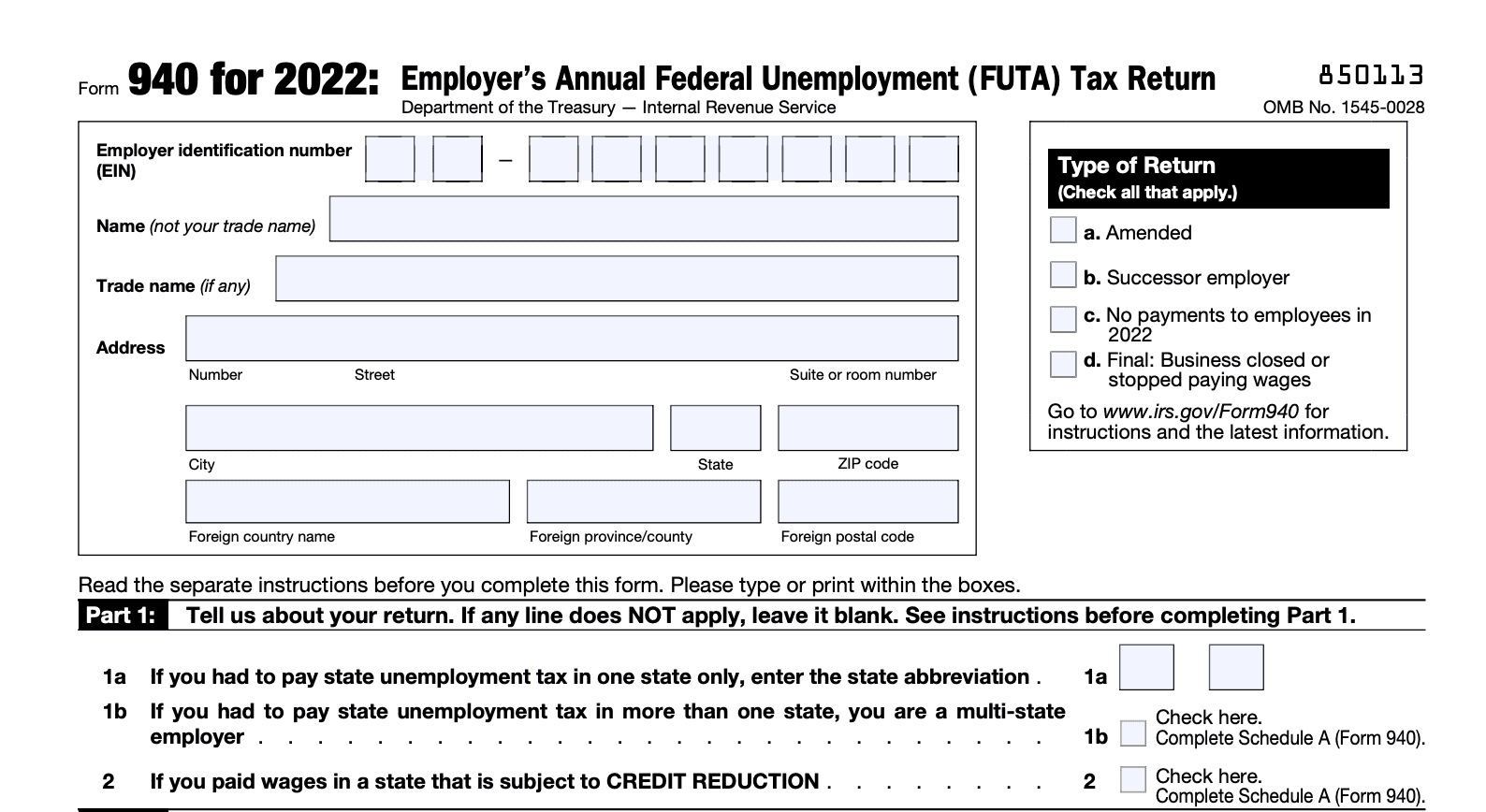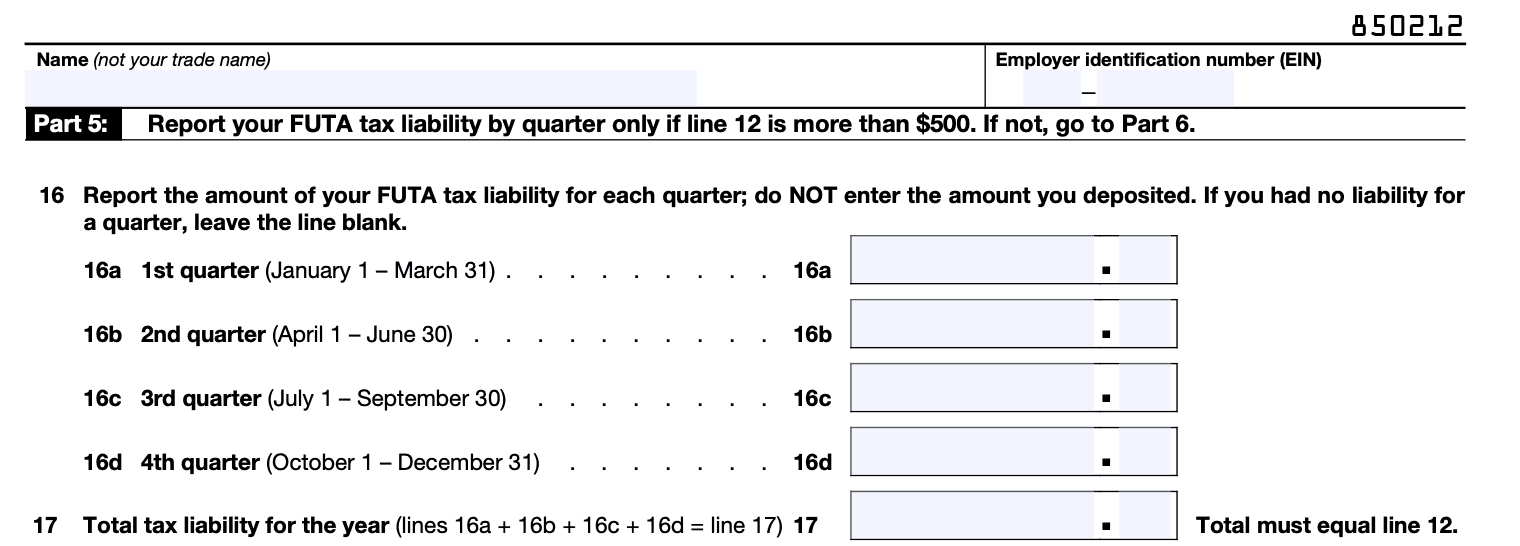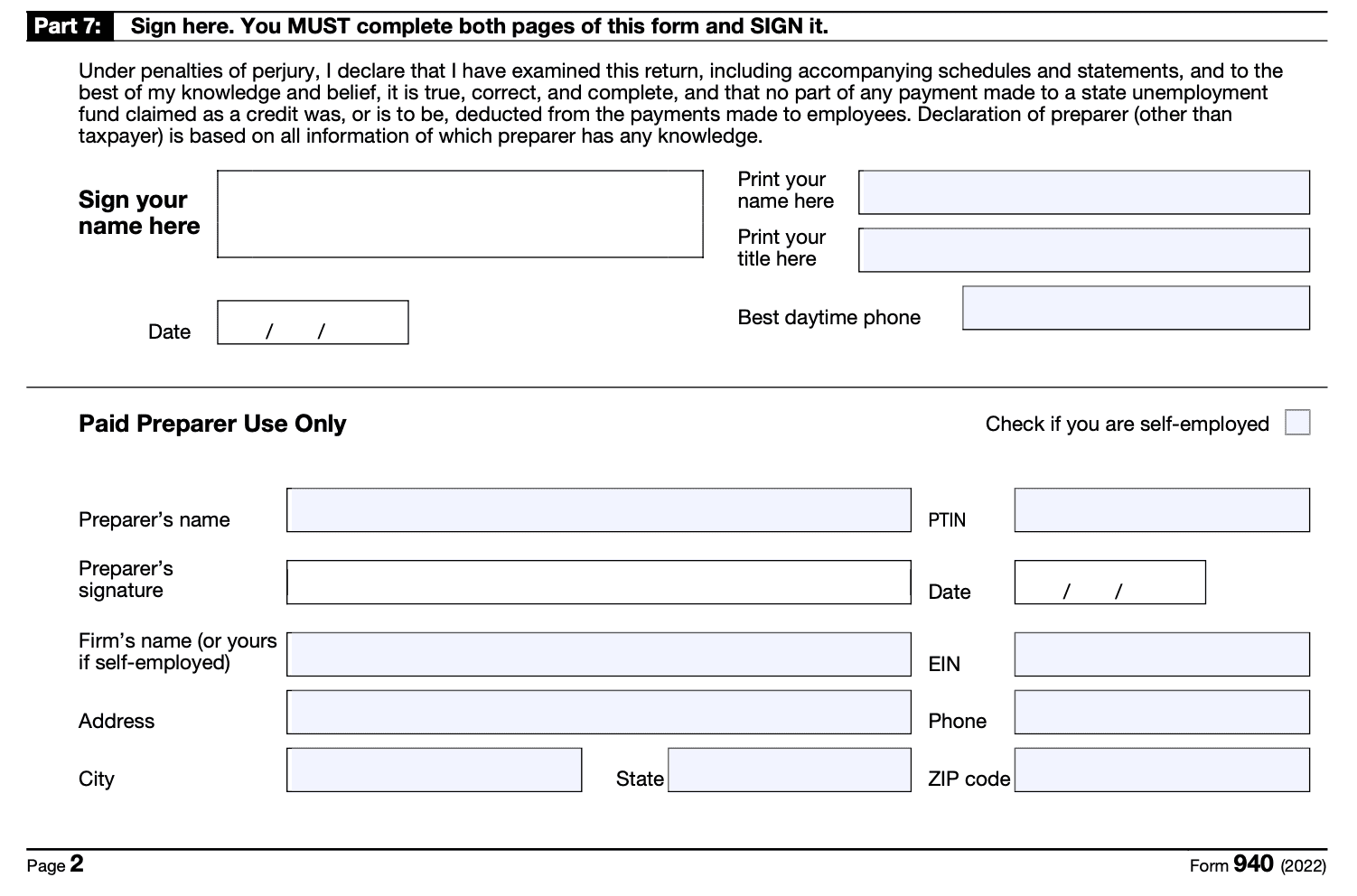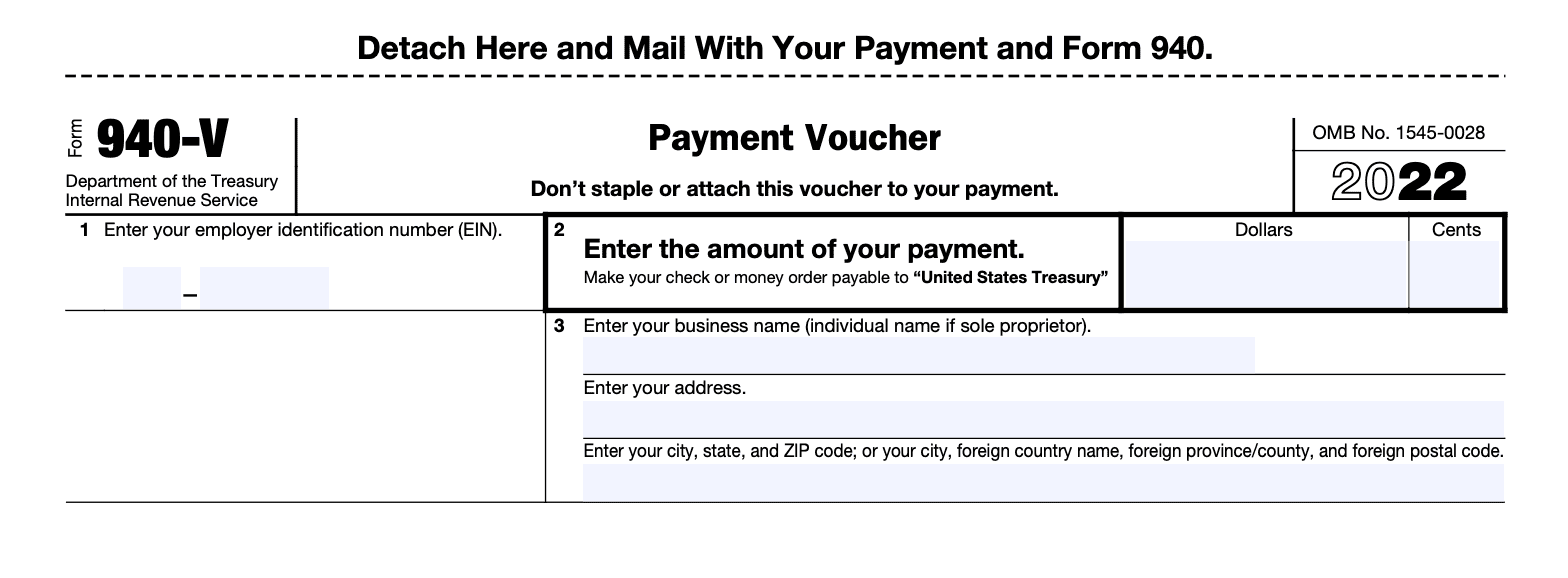- IRS forms
- Form 940
File Form 940: A Simple Guide to FUTA Tax Returns
Download Form 940Depending on your source of income and filing status, you are subject to filing different tax forms and keeping track of various expenses. Employers or small business owners must file some additional forms. Form 940 is one of these, which is used for FUTA returns.
If you hire employees for your company, you must know what Form 940 is and why it works. But in case you do not, we are here to guide you.
What Is Form 940?
Form 940 is the federal unemployment tax annual report that employers must file to inform the IRS about unemployment tax for their employees.
This unemployment tax is not deducted from the salary or payment for the employee. Instead, it is set aside by the employer to report on Form 940.
The Federal Unemployment Tax Act (FUTA) works alongside the state unemployment benefits to cover those who lost their jobs due to unforeseen circumstances.
Employers are taxed by the government to provide for these benefits. To abide by FUTA, employers need to make regular tax payments and report them on Form 940 with the IRS.
This payroll tax is charged from employers at 0.6% of the first $7,000 that the employee earns. Any income beyond this amount is not taxed. Depending on the state’s individual FUTA tax credit, this amount might turn out to be lower than 0.6%.
Form 940 is crucial to be filled by employers as this sum is not withheld from the employee’s paycheck. However, to do so accurately, you must be aware of the rules regarding this act and to whom it applies.
Who Needs to File Form 940?
The IRS has very simple rules about who has to fill out Form 940. You must make FUTA payments if:
- You have employees to whom you have paid wages that amount to $1,500 or more during the financial year.
- You have had at least one employee for part of a day or more in any 20 or more different weeks over the year. This may include full-time, part-time, and temporary employees (excluding partners in a partnership). They count even if their work duration is less than one business day.
If your business was sold or transferred, each employer meeting the above criteria must file Form 940. However, don't include any wages paid by the predecessor employer on your Form 940 unless you’re a successor employer.
If you're not liable for (link: https://fincent.com/blog/what-is-futa-who-needs-to-pay-how-to-calculate text: FUTA tax) for 2022 because you made no payments to employees, check box c in the top right corner, sign the form, and file it with the IRS. If your business has closed or you stopped paying wages, check box d in the top right corner.
Special Conditions:
- Household Employers: File Schedule H (Form 1040) instead of Form 940, unless you have other employees, in which case you can choose to include household employees on Form 940 and file Form 941, 943, or 944 for other taxes.
- Agricultural Employers: File Form 940 if you paid cash wages of $20,000 or more to farmworkers during any calendar quarter or employed 10 or more farm workers during any 20 or more different weeks.
- Indian Tribal Governments: Services rendered by employees of a federally recognized Indian tribal government employer are exempt from FUTA tax and no Form 940 is required if the tribe participated in the state unemployment system for the full year and complied with state unemployment law.
- Tax-Exempt Organizations: Section 501(c)(3) organizations generally aren't subject to FUTA tax, but they are if they pay wages to employees on behalf of a non-section 501(c)(3) organization.
- State or Local Government Employers: Services rendered by employees of a state, or a political subdivision or instrumentality of the state, are exempt from FUTA tax and no Form 940 is required.
When Do You Have to File Form 940?
After you have understood what a 940 tax form is and who is required to fill it, you need to know the due date. Note that FUTA payments are due quarterly, whereas Form 940 should be submitted once a year.
The due date for Form 940 for the year 2023 is January 31, 2024. However, the IRS extends the deadline for those who have made FUTA payments regularly by 10 days. Hence, the due date for such employers will be February 10, 2024.
Here is the tax filing due date information in table format:
| Year | Form 940 Due Date | Extended Due Date for Regular Payers |
| 2023 | January 31, 2024 | February 10, 2024 |
How to Fill Out Form 940
Form 940 is a simple enough form that has two pages and is divided into seven parts. It is fairly easy to fill out once you have clarity about the seven sections. Let’s go through their basics.
Part 1
The first part covers information about your business that is important for the IRS. You have to mention how many states you pay unemployment taxes in.

- In Line 1, you must specify if you pay unemployment taxes in a single state.
- Line 1b is for those employers who pay taxes in more than one state.
- In Line 2, you need to specify whether you work in a credit reduction state.
- If you are a multi-state employer or work in a credit reduction state (i.e., you have checked the boxes in Line 1b or 2), you have to complete Schedule A of Form 940.
Part 2
In Part 2, you will need to calculate your FUTA tax liability.

- Line 3 requires you to mention all payments that you made to your employees.
- In Line 4, you must mention if any of these payments are exempt from FUTA. Some FUTA-exempt payments may include group term life insurance and fringe benefits.
- In Lines 6-8, you calculate your total taxable FUTA payments and the total FUTA tax amount before adjustments.
Part 3
This section requires you to make adjustments to the amount based on your state’s unemployment tax rules.

If all your FUTA wages mentioned in Part 2 are excluded from the state unemployment tax, you will need to:
- Multiply Line 7 by 0.054, and
- Record that amount in Line 9
Then, you can move on to Part 4.
If that is not the case, you can use the worksheet given on Page 11 of the instruction booklet to calculate your adjustments and the total amount dedicated to them.
Part 4
In this part, you must calculate the total FUTA tax.

- Line 12 lets you add Lines 8, 9, 10, and 11 to calculate the total FUTA tax after adjustments.
- In Line 13, you can mention any FUTA payments or overpayments that you have already made.
- In Lines 14 and 15, you can determine whether there is any outstanding amount of FUTA tax or overpaid fees due for your business.
Part 5
This section depends on the amount you calculated in Line 12.

- If that amount is more than $500, you must use boxes 16a-d to report FUTA liabilities for every quarter. Add the liability to the box, not the quarterly payment amount.
- Ensure the sum of all your entries in this step is the amount you entered in Line 12.
Part 6
In this part, you have to designate someone to discuss Form 940 on your behalf with the IRS. This person can be an employee, a tax professional, or someone similar who is qualified for the discussion.

Part 7
After entering all the details in the previous sections, you must sign your name in this part to complete the form.

Additional Information: Payment Voucher
If all your FUTA taxes are paid, you can skip this part. But if you have any tax amount due with the IRS, you must add a payment voucher along with Form 940.

To include a valid payment voucher, you must add your employer identification number (EIN), business name, and address, as well as the total payment amount. Once you mention all these details, your form and voucher are ready to be submitted.
Where to File Form 940: In Person or Electronically?
There are multiple ways to file the 940 tax form. You can file a physical copy of the form with the IRS or choose to go with an electronic filing.
- **In-Person Filing: **In case of paper returns, you must file Form 940 in the place indicated by the IRS. Depending on whether you also have a payment voucher to submit, you can consult this table to find the correct destination.
- E-Filing: On the other hand, if you want to file this form electronically, you can go to the IRS website and carry out the process online.
Calculating Your FUTA Tax Liability for Each Quarter
Determine your FUTA tax liability by considering the first $7,000 paid to each employee per calendar year, excluding any exempt payments. The 2022 FUTA tax rate is 6.0%. Most employers receive a maximum credit of up to 5.4%. Calculate your tax liability for each quarter by taking the first $7,000 of each employee's annual wages paid during that quarter.
To calculate your tax liability:
- Add the first $7,000 of each employee's annual wages paid during the quarter for FUTA wages.
- Multiply that amount by 0.006.
You're entitled to the maximum credit if you paid all state unemployment tax by the due date of your Form 940 or if you weren't required to pay state unemployment tax due to your state experience rate.
If any wages subject to FUTA tax aren't subject to state unemployment tax, you may be liable for FUTA tax at the maximum rate of 6.0%.
Depositing Your FUTA Tax
Use Electronic Funds Transfer (EFT) to deposit your FUTA tax. An EFT is typically made using the Electronic Federal Tax Payment System (EFTPS). Tax professionals, financial institutions, payroll services, or other third parties can make electronic deposits on your behalf. You can also arrange for your financial institution to initiate a same-day wire payment.
EFTPS is a free service provided by the Department of the Treasury, while other services may charge a fee. For more information, visit EFTPS.gov or call one of the numbers provided under Federal tax deposits that must be made by electronic funds transfer (EFT).
Avoiding Penalties and Interest
- Depositing and paying your tax when due.
- Filing your fully completed Form 940 accurately and on time.
- Attaching Schedule R (Form 940) if required.
- Ensuring your tax payments are honored by your financial institution.
Penalties and interest are charged on late taxes and returns at a rate set by law. Use Form 843 to request abatement of assessed penalties or interest.
Amending a Return
Use the appropriate year's Form 940 to amend a previously filed return. To amend your return:
- Use a paper return to amend a Form 940 filed under an electronic filing program.
- Check the amended return box in the top right corner of Form 940, page 1, box a.
- Fill in all the amounts that should have been on the original form.
- Sign the form.
- Attach an explanation of why you’re amending your return.
- File the amended return using the "Without a payment" address.
If you file an amended return for an aggregate Form 940, attach Schedule R (Form 940) and complete it only for employers with adjustments on the amended Form 940.
Form 940 Signature Authorization
The authorized signatories for Form 940 vary depending on the type of business entity:
- Sole proprietorship: The owner of the business.
- Partnership (including an LLC treated as a partnership) or unincorporated organization: A responsible and duly authorized partner, member, or officer familiar with the business affairs.
- Corporation (including an LLC treated as a corporation): The president, vice president, or another principal officer with signing authority.
- Single-member LLC treated as a disregarded entity for federal income tax purposes: The owner of the LLC or a principal officer with signing authority.
- Trust or estate: The fiduciary.
Additionally, Form 940 may be signed by a duly authorized agent if a valid power of attorney or reporting agent authorization (Form 8655) has been filed.
Alternative Ways to Sign Form 940
Corporate officers or duly authorized agents can use alternative methods for signing Form 940, including:
- Rubber stamps,
- Mechanical devices,
- Computer software programs.
For further details and required documentation, consult Rev. Proc. 2005-39, 2005-28 I.R.B. 82, available at IRS.gov/irb/2005-28_IRB#RP-2005-39.
Conclusion
The IRS gives you multiple ways to comply with FUTA and submit your payments and Form 940 on time to ensure the smooth running of your business. So, if you are an eligible employer who followed these steps, you can file the FUTA tax return well in advance.
Maintaining your account books is another step that ensures your returns are filed correctly and on time. Professional bookkeeping services like Fincent are perfect for creative small businesses looking for guidance on handling their bookkeeping.


